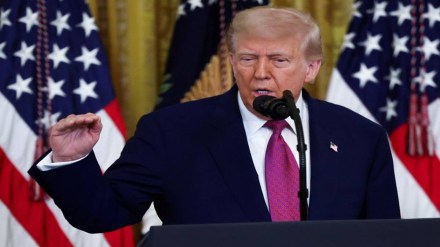United State’s harsh stand on India amid the trade deal negotiations have sent shock waves across the country with Ashok Mailk, partner at advisory firm The Asia Group, calling it India-US relationship in its toughest spot since the mid-1990s.
“Trust has diminished. President Trump’s messaging has damaged many years of careful, bipartisan nurturing of the U.S.-India partnership in both capitals.”
Ahead of the Parliament Session, top BJP ministers are in a huddle to discuss the government’s strategy. Now, reports suggest that Commerce Minister Piyush Goyal is expected to make a statement in the House.
US President Donald Trump, in a post on Truth Social, has sent another hit towards India stating that he isn’t concerned about India’s ties with Russia and doesn’t mind if both countries hurt their own economies.
He slammed India for having extremely high tariffs, which he said is one reason why the US has limited trade with the country. He also pointed out that the US has very little trade with Russia and wants it to stay that way. Trump also took aim at former Russian President Dmitry Medvedev, warning him to be careful with his statements, calling them risky and suggesting he is acting as if he still holds power.
Trump had on Wednesday said that the US can still negotiate with India over a possible trade deal. Earlier that day, he had announced that Washington would start charging a 25% tariff rate on India starting August 1. Later, at the White House, Trump mentioned that India is open to cut its tariffs substantially. “”We’re talking to India now – we’ll see what happens … You’ll know by the end of this week,” he said.
Trade or tariffs? Trump threatens India over deficit and BRICS
Trump had earlier suggested in a post on Truth Social that the new trade penalty was a reaction to India buying weapons and oil from Russia. He said that the decision was made partly in context about the trade and partly about India’s role in BRICS, which the US President sees as “anti” to the United States. He claimed that BRICS is trying to weaken the US dollar, and the government would not allow that to happen.
Trump further mentioned that although he considers Prime Minister Modi a friend, the two countries don’t do much balanced trade. He pointed out that while India sells a lot to the US, the US doesn’t export much to India because Indian import taxes are very high. According to him, India is now ready to lower those tariffs by a significant amount.
In the end, he added that talks with India are ongoing, and that it doesn’t matter much whether they reach a deal or go ahead with the tariffs. He said that a decision will be clearer by the end of this week.
Did White House warn India beforehand?
The White House had earlier raised concerns about India’s high import taxes, especially on agricultural goods. On average, India charges nearly 39% on these products, with even higher rates of up to 45% on vegetable oils and about 50% on apples and corn, a Reuters report said.
India-US trade deal: Point of contention
There have been several rounds of talks between US and Indian officials to sort out their disagreements, mainly about giving American agricultural and dairy products better access to Indian markets.
India, in a recent statement, said protecting its farmers, local businesses, and small traders is its top priority. The government has said that it will do whatever is needed to defend the country’s interests, just as it has done in other trade deals.
This disagreement is a setback, especially after earlier promises by Prime Minister Narendra Modi and Trump to finalise the first part of a trade deal by autumn.
Trump’s deal with Pakistan
Trump further revealed that he had made a deal with Pakistan to help them develop their oil resources. He hinted that Pakistan might even sell oil to India in the future. This comment didn’t sit well with New Delhi, which has been uneasy about Trump’s closeness with Pakistan, especially after the deadly Pahalgam attack. India has strongly objected to these ties, which has further strained trade talks.
